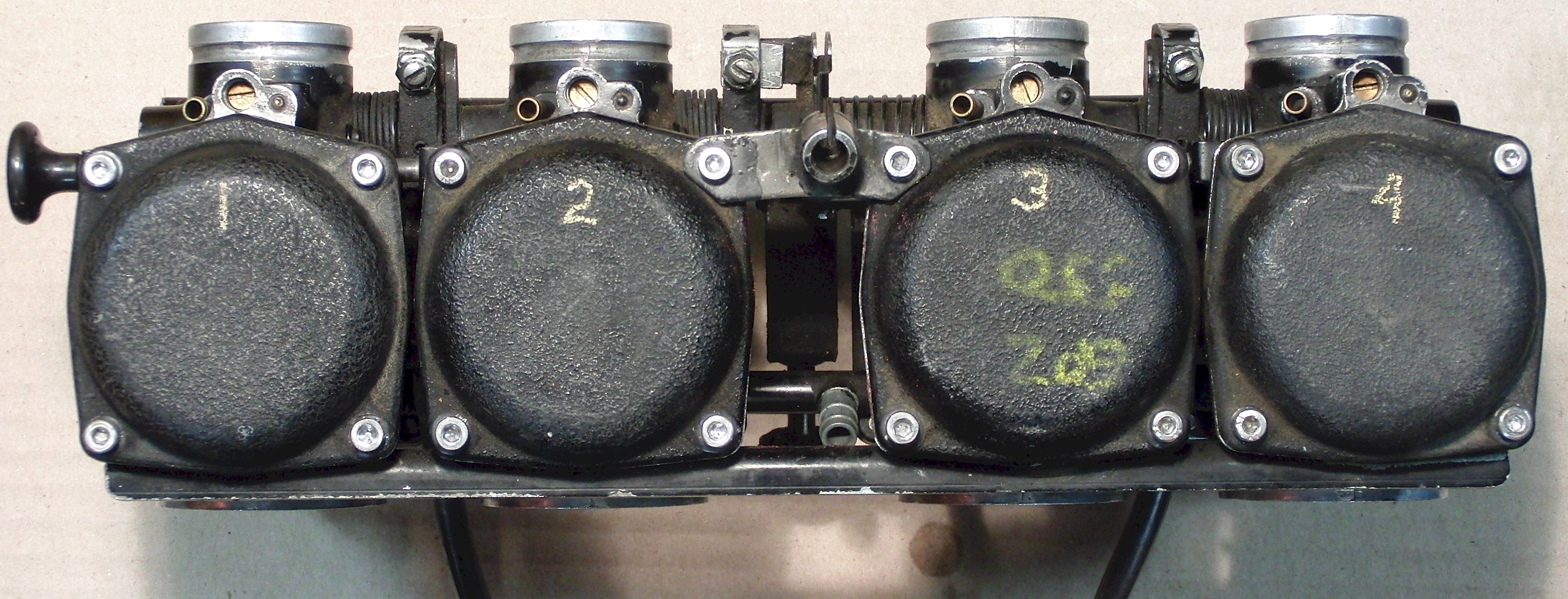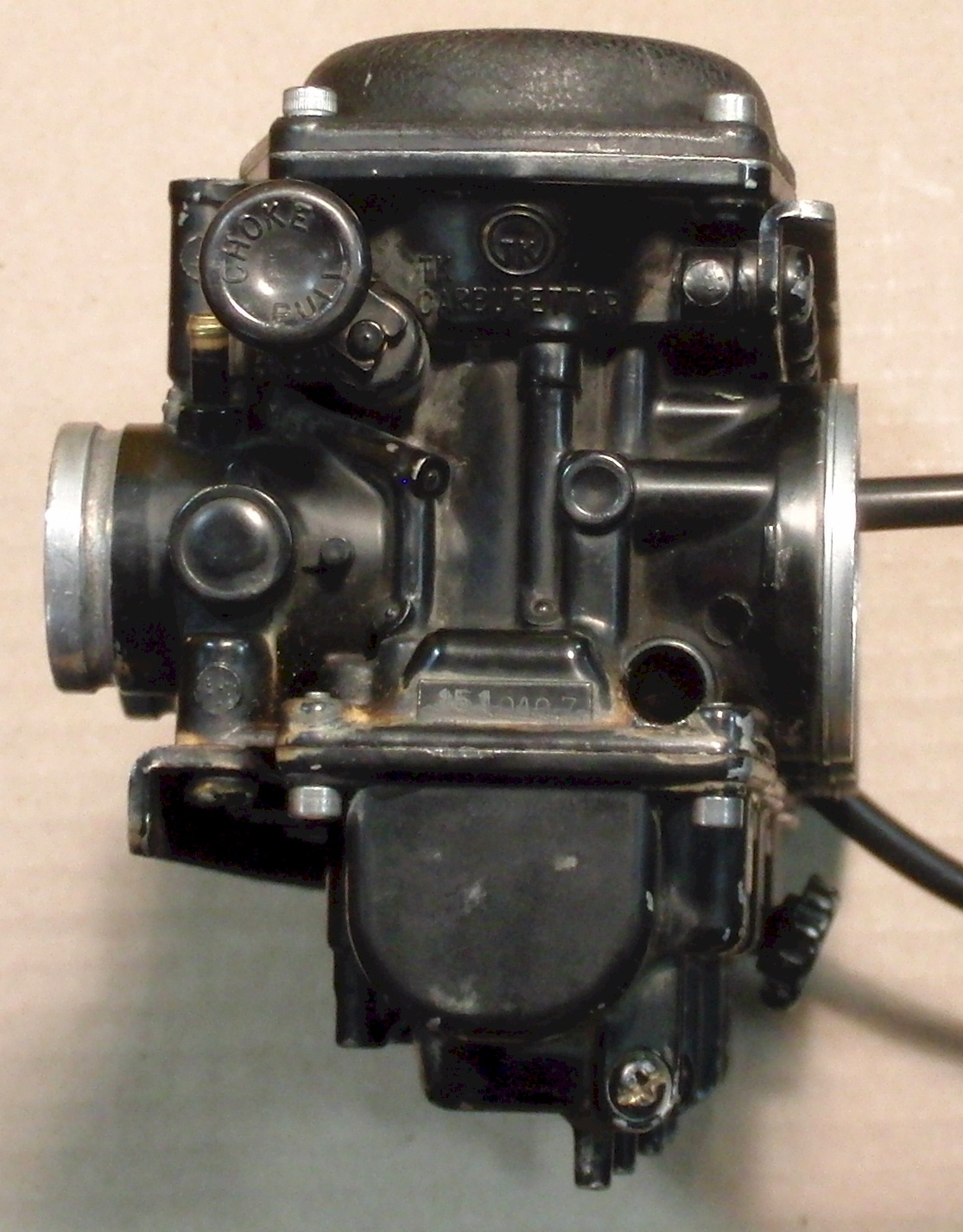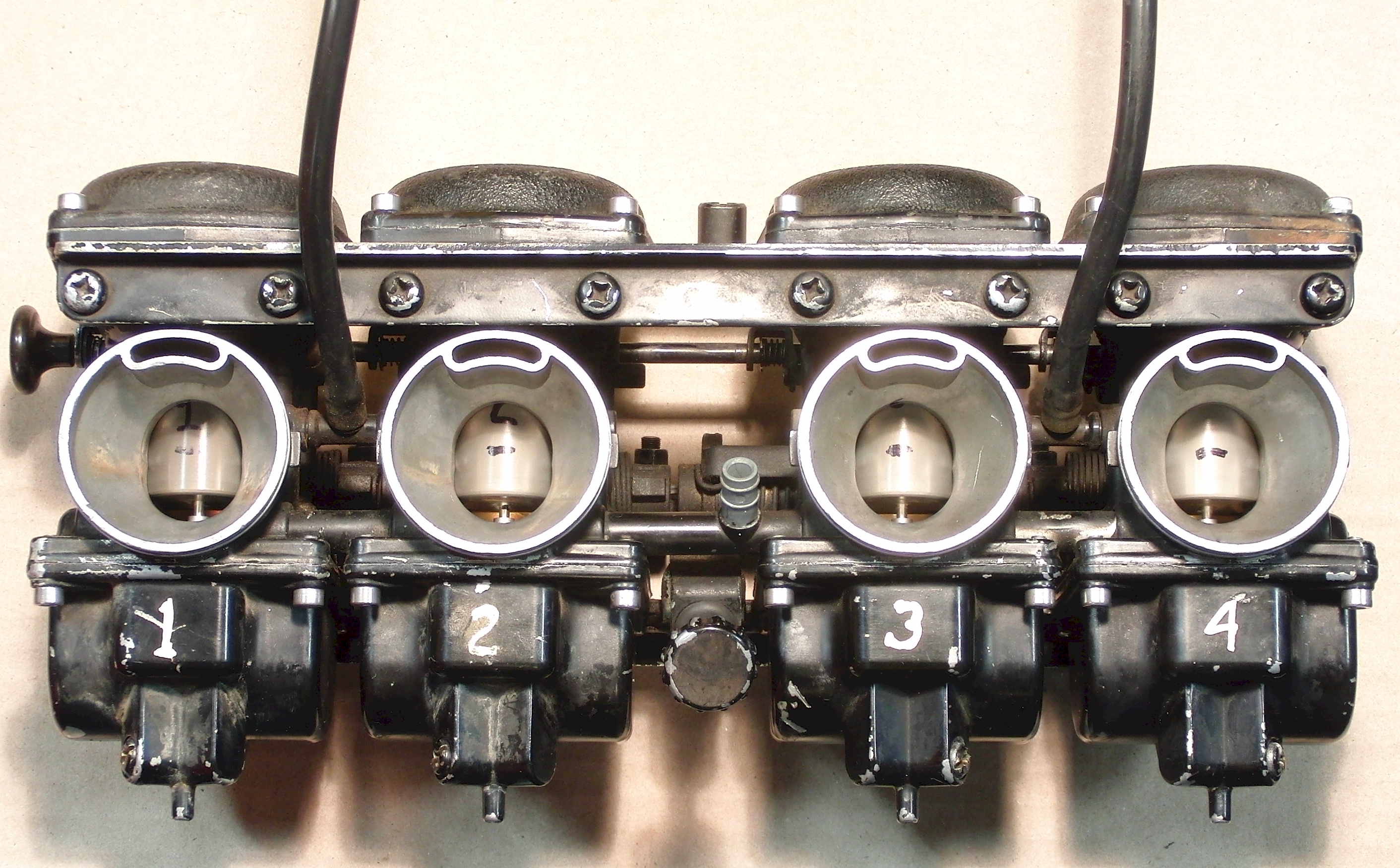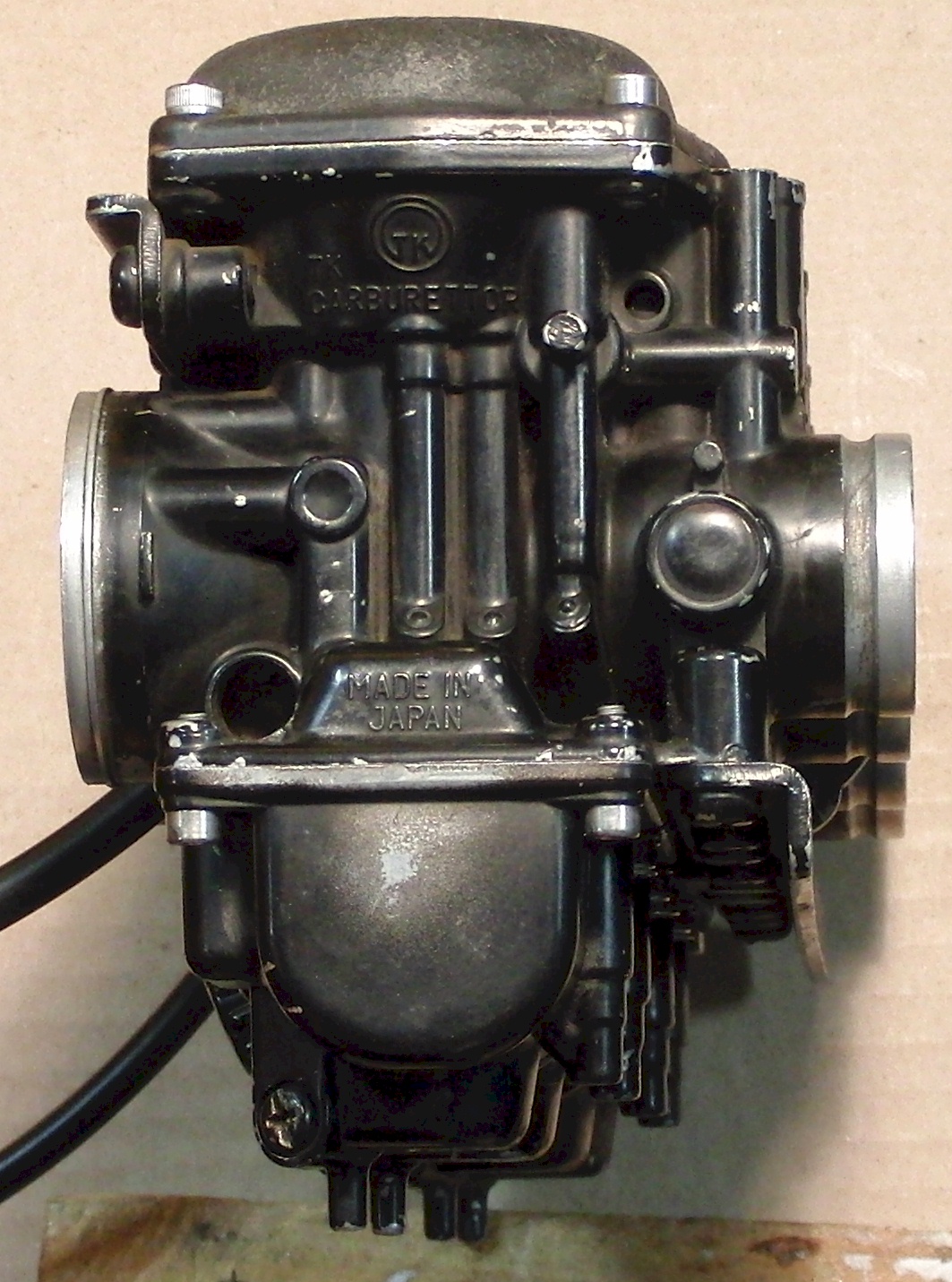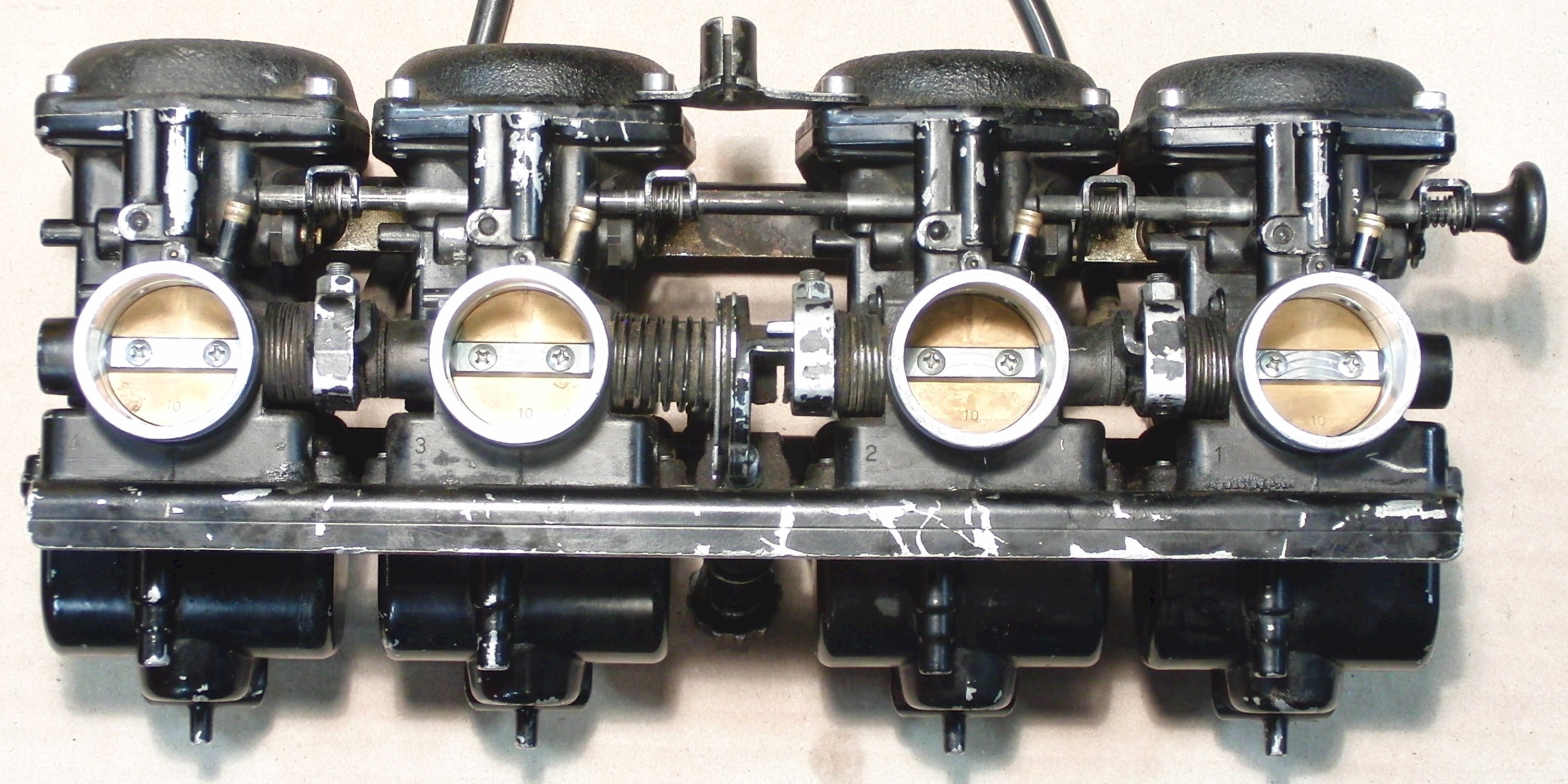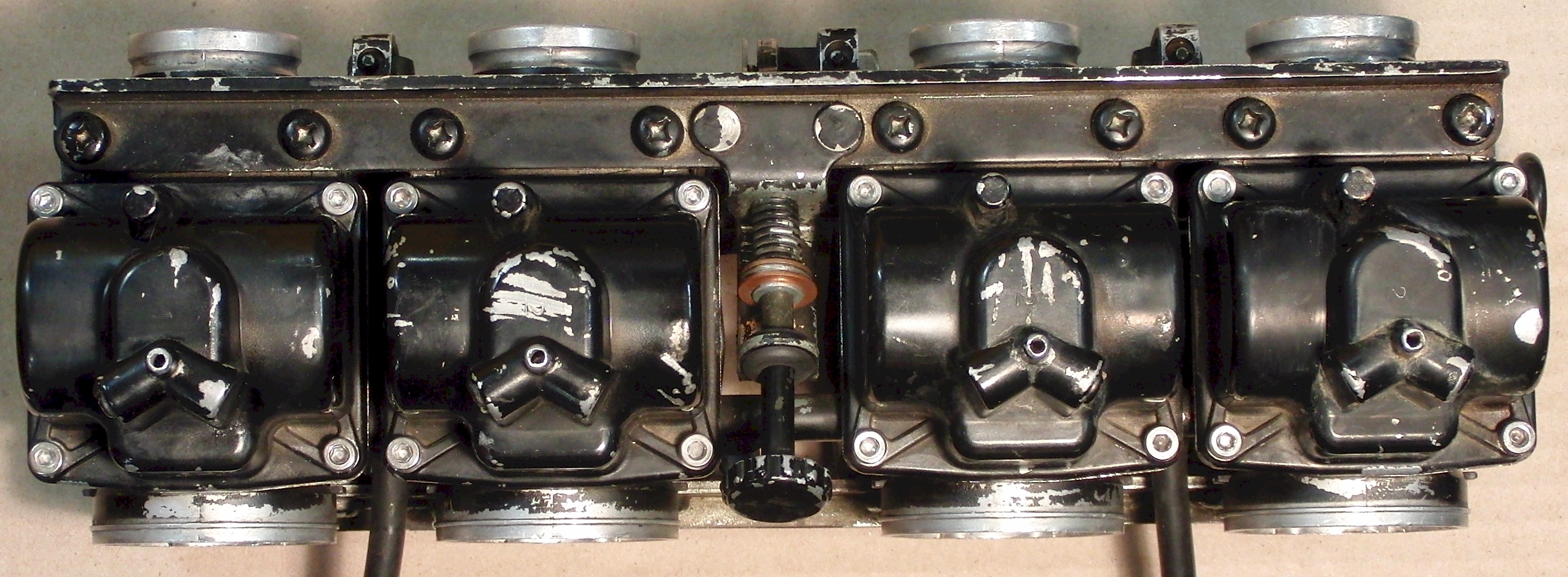This page was started in October of 2017, and will be under construction for some time.
The Teikei brand, (known as "TK" brand outside of Japan), TK-26 and TK-27 carburetors are very similar. In the U.S., they were used on later Kawasaki KZ550, and ZX550 (inline-four) motorcycles. The information on this page is for TK-26 carburetors, but some of it will apply to TK-27 carbs as well.
The TK-26/27 carbs are a constant-velocity, or constant-vacuum, (CV), vacuum-actuated-slide carb.
One major point that should be noted, is that the drain is a simple drain valve. It does not incorporate an "overflow" system. If the float valves fail to shutoff the fuel flow, the bowls will overflow into the carburetor throat, and directly into the engine or air filter.
There are two major variants of the TK-26 carbs used on Kz550 motorcycles.
Early TK-26 ('82/'83 Kz550 H1-H2 models in the U.S.)
The early TK-26 variant has two main jets and a single pilot jet. The intermediate main jet circuit feeds the pilot jet. Because of this, the pilot jet port has a plastic plug installed over it to isolate the pilot jet from the main bowl. This variant is found on the 1982 Kz550H1 (Gpz) and the 1983 Kz550H2 (Gpz).
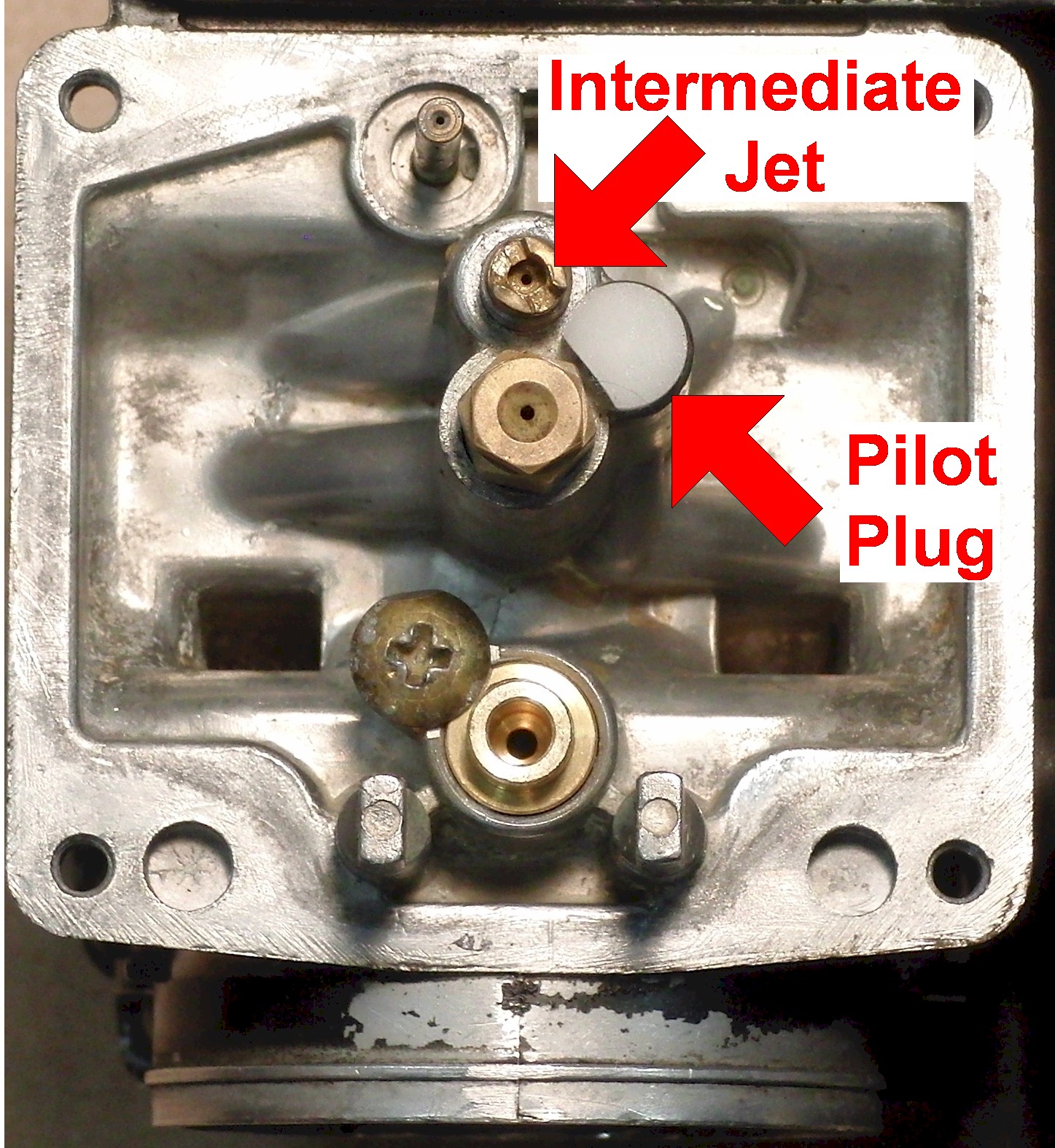
One problem with this carburetor is that the pilot plugs are prone to breaking or being lost. When this happens, excessive fuel will flow, not only in the pilot system, but in the intermediate circuit as well. This is because fuel from the bowl will bypass the intermediate jet through the passage connecting the pilot port to the intermediate port. This passage is much larger than the intermediate jet orifice. The excessive fuel flowing in the intermediate circuit is likely more detrimental to running, than that of the excessive fuel flowing in the pilot system. (See the page on Tk26 port routing for more details.)
Later TK-26 ('83/'84 Kz550 A4, M1, F1-F2 models in the U.S.)
The later TK-26 variant eliminated the intermediate main jet circuit entirely. This simplification of the Tk-26 carb required some minor changes.
1) The pilot jet plug was also eliminated so the pilot jet gets fed directly from the float bowl.
2) The main jet had a much larger orifice. Shaft-drive bikes had slightly larger orifice than the chain-drive bike.
3) The metering needle was changed.
4) The needle-jet was changed.
5) The main bleed pipe was changed to a type which does not use an o-ring.
TK-27 ('84/'85 Zx550 A1-A2 models in the U.S.)
The TK-27 carburetor was very similar to the later TK-26. It also only had one main circuit and no pilot plug, along with some further, minor changes.
1) The pilot jet had a slightly larger orifice size.
2) The main jet had a slightly larger orifice than the previous Tk26-equipped Kz550A4 chain-drive model, but still smaller than the shaft drive models.
3) The metering needle was changed again.
4) The needle-jet was changed again.
5) The vacuum-slide was changed.
6) The vacuum-slide spring was changed.
TK-26 Bore Info
The bore of the carbs starts out round at the airhorn, then changes to a vertically elongated circle at the slide. The circle is about 23mm in diameter, and is stretched vertically at the middle by 5mm. The floor to roof distance is then approximately 28mm (23 + 5). Then the bore changes back to circular at the exit port on the engine side.
The airhorn lip outside diameter is nominally 50 mm.
The exit port outside diameter is nominally 36 mm.
The exit port inside diameter is nominally 30 mm.
The KZ550's have a carb spacing of 71 mm center-to-center for carbs 1-to-2, and 3-to-4.
The KZ550's have a carb spacing of 92 mm center-to-center for carbs 2-to-3.
Links to TK-26/27 pages:
Teikei corporation website in English.
TK-26/27 parts diagrams and part numbers.
TK-26/27 jet dimensions, availability.
TK-26 two types of 82/83 Gpz needles.
TK-26/27 adjustments and maintenance.
